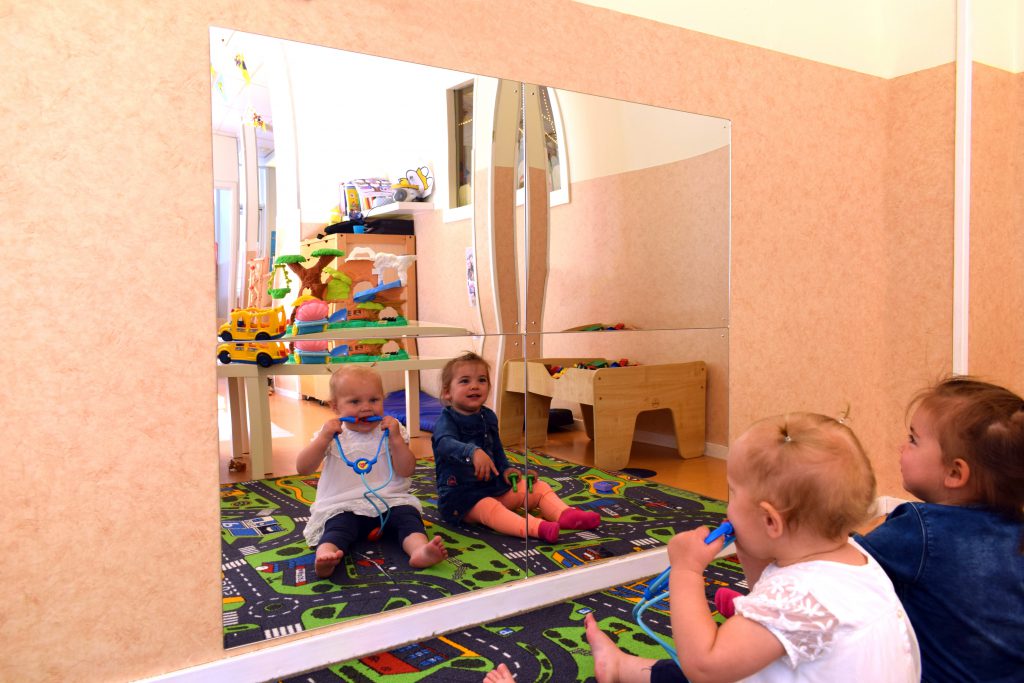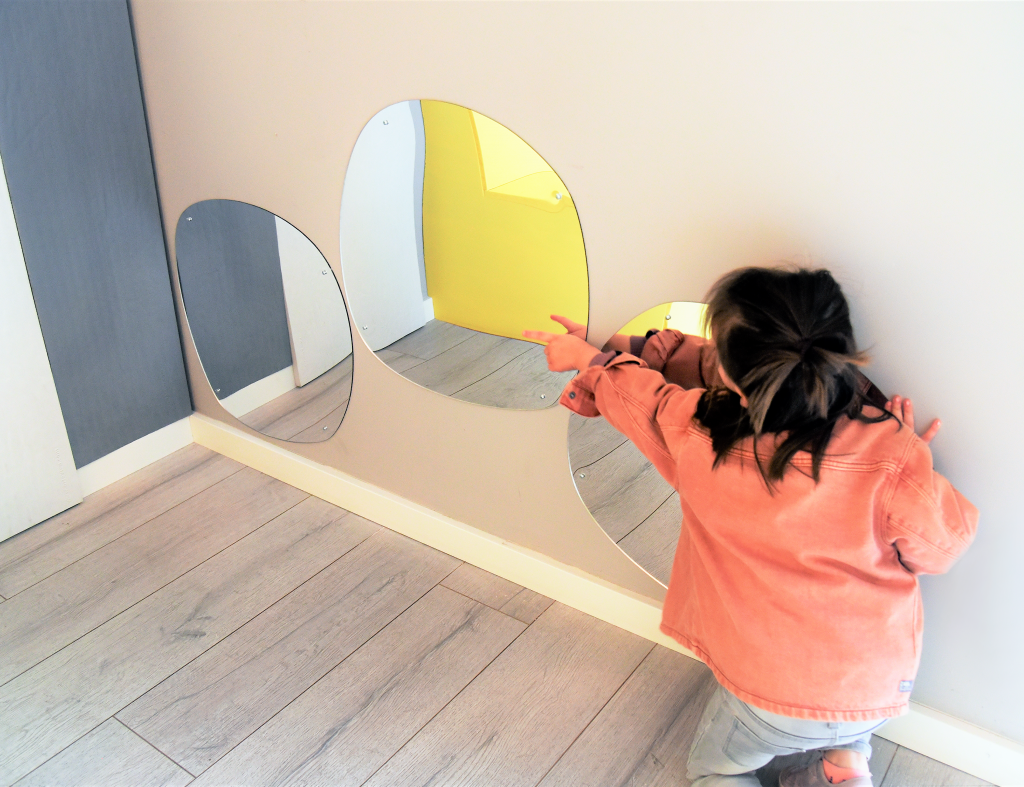Mirrors stimulate children’s development
The discovery of themselves and raising self-awareness

Mirror play is a fun and fascinating way to engage babies and toddlers as it helps them to nurture self-awareness development. Playing with mirrors also gives parents the opportunity to talk with their baby, laugh, and enjoy some time together, which deepens the bond with each other.
But what makes mirrors so intriguing? And why is it recommended to hang a mirror in the child’s play space? It does not only support your child’s healthy development and learning but it also helps to develop their visual senses. You can also use a mirror during tummy time to keep your baby entertained and give them more time to develop their muscles and physical abilities. Playing with a mirror can also help to develop the language skills of a child. Even before they can use words, you can point out parts of their face and have little back-and-forth conversations.
Before hanging a mirror to the child’s play area, make sure these are shatterproof, easy to clean, and safety mounted.

Children’s Level 0: Confusion (0 months)
Babies still sleep for most of the day and often cannot see very well yet. Babies do not recognize a mirror as an object and the mirror image is therefore interpreted as an extension of the environment.
Level 1: Differentiation (0-2 months)
In this stage, babies can differentiate between self and environment. Furthermore, they can recognize their own movements as the mirror is now perceived as an object and the complete synchronicity of your own movements is noticed in the reflection.
Children’s Level 2: Positioning (2-4 months)
Babies systematically explore the connection between the reflected movements and one’s own movements. The first understanding of the mirror image happens at this level.

Level 3: Identification (18-24 months)
In this stage, the child can recognize the relationship between the mirror image and self as they refer to the mirror image as “I” for the first time. This is also the beginning of self-centered emotions like pride and shame.
Level 4: Permanence (3-4 years)
Children can recognize and identify themselves in pictures and videos. Overall, they are no longer tied to temporal synchronicity as they permanently recognize themselves.
Level 5: Meta-cognitive self-awareness (4-5 years)
In this last stage children can look at themselves from the perspective of others as they have the basis of social understanding. Self-centered emotions like pride and shame are fully developed at this stage and the children have an adult understanding of self and environment.
Child Safe Mirrors – Arte Viva
Arte Viva designed child-safe mirrors in three different fun and unique shapes to support the development of self-discovery and self-awareness from a child. Our child-friendly mirrors are highly reflective and shatterproof and therefore the safe choice for giving rooms a bright and open feeling for kindergartens and childcare centers. The mirrors are perfect for children to look at themselves and can be combined individually to meet their needs. The rounded edges make the nursery mirror safe to use in any environment where children are playing.
Discover our unique child-safe mirrors and join Arte Viva’s mission to create a safer world for children!

Questions?
We are happy to help you choose the right solution. Contact us for more information or request a quote without obligation.
